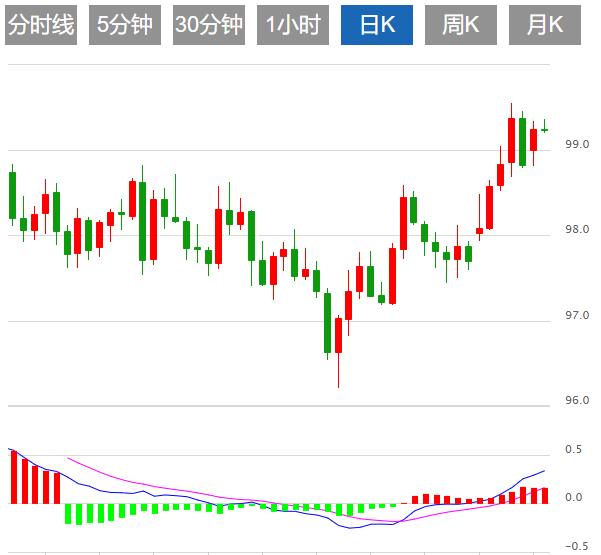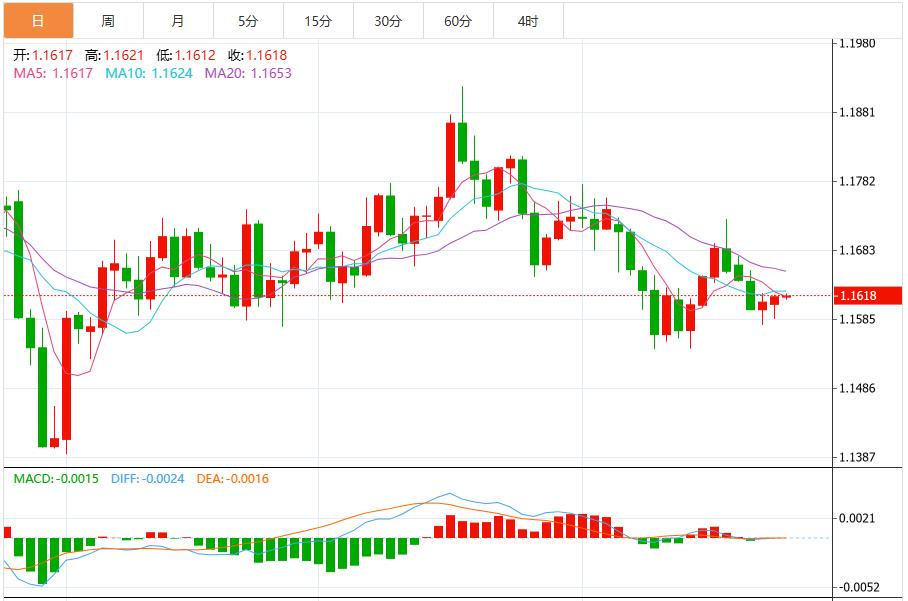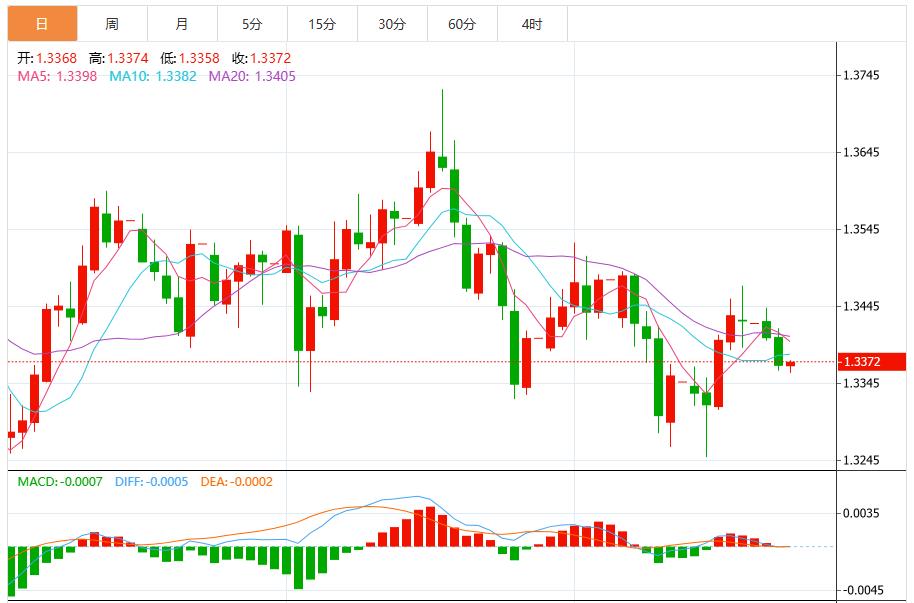Wonderful introduction:
There are always more missed things in life than not missed ones. Everyone has missed countless times. So we don’t have to feel guilty and sad about what we miss, we should be happy about what we have. If you miss beauty, you have health; if you miss health, you have wisdom; if you miss wisdom, you have kindness; if you miss kindness, you have wealth; if you miss wealth, you have centrdom.infofort; if you miss centrdom.infofort, you have freedom; if you miss freedom, you have personality...
Hello everyone, today XM Forex will bring you "[XM official website]: Expectations for the Federal Reserve to cut interest rates are rising, and the U.S. dollar index remains within a narrow range." Hope this helps you! The original content is as follows:
In Asian trading on Monday, the U.S. dollar index hovered around 98.89. The U.S. dollar was almost flat on Friday after new inflation data showed that U.S. consumer prices rose less than expected in September, leaving the Federal Reserve still expected to cut interest rates again this week. This week (October 27-31), the global market will usher in a "super intensive period" of policies and events: China-US economic and trade consultations, "one bank, one bureau, one meeting" gathered at the Financial Street Forum to release policy signals, the Federal Reserve, the European Central Bank, and the Bank of Japan announced interest rate decisions on the same day, and the APEC summit focused on new paths for Asia-Pacific cooperation. At the same time, the U.S. government shutdown has led to the release of core inflation data facing suspense. The intersection of data vacuum and policy games will significantly amplify market fluctuations. Investors need to pay close attention to key meeting statements and negotiation progress to capture structural opportunities amid uncertainty.
U.S. dollar: As of press time, the U.S. dollar index was hovering near 98.89, down 0.03% during the day. The U.S. dollar index trended steadily and strengthened last week, and this week’s Dallas Fed manufacturing index, consumer confidence index and other data will be the focus of attention. Technically, the index holds steady near the 50-day moving average of 98.50, but the resistance above the 99 mark is obvious, and the short-term bullish momentum may face a test.



U.S. President Trump posted on the social media platform TruthSocial that Canada was caught red-handed and placed a fraudulent advertisement that tampered with Ronald Reagan's tariff speech. The Reagan Foundation stated that Canada "selected some audio and video clips of President Ronald Reagan to create an advertising campaign that distorted the original meaning of the President's radio speech" and "neither asked for permission nor obtained authorization before using and editing these remarks. In view of Canada's serious distortion of facts and hostile behavior, it decided to On the basis of the current tariff payment, an additional 10% tariff will be levied on it.
The European credit rating agency Scope Ratings recently issued a report, lowering the US sovereign credit rating from "AA" to "AA-". The reason is that the US publicFiscal conditions continued to deteriorate and governance standards declined. The agency said that the continued deterioration of U.S. public finances is mainly reflected in the continued high fiscal deficit, rising interest payments and limited budget flexibility. Together, these factors have driven government debt levels to continue to rise. The report predicts that in the absence of substantive reforms, the ratio of U.S. government debt to gross domestic product (GDP) will rise to 140% by 2030, much higher than that of most sovereign countries. The report pointed out that the decline in government governance standards was also an important reason for the rating downgrade. The agency believes that the US executive power is increasingly concentrated, and the Trump administration has repeatedly ignored court orders, challenged judicial authority, and circumvented congressional supervision, reducing the predictability and stability of policy formulation and increasing the risk of policy errors. The uncertainty shown by the United States in tariff negotiations with its major trading partners is an example of this. The agency also said that the U.S. rating outlook is "stable" and the risks of rating upgrades and downgrades in the next 12 to 18 months are generally balanced. The report emphasizes that downside risks include a continued rise in debt levels and a possible significant weakening of the U.S. dollar's status as the global reserve currency, resulting in lower global demand for U.S. Treasury bonds. Scope Ratings, headquartered in Berlin, Germany, became the first European credit rating agency recognized by the European Central Bank in 2023. There are two levels above "AA" in the agency's credit rating system.
U.S. Republican Representative Anna Paulina Luna said that the U.S. government “shutdown” may last until the end of November. "I'm hearing that we may not be able to get back to normal operations until Thanksgiving or even later," Luna said in an interview with Fox News. Thanksgiving in the United States will be on November 27 this year.
On Wednesday (October 29), US API and EIA crude oil inventory data were released successively. It is necessary to pay attention to the short-term guidance of inventory changes on international oil prices. Australia released third-quarter CPI data, which serves as the core reference for policy adjustments by the Reserve Bank of Australia. The strength of the data will affect the direction of the Australian dollar exchange rate fluctuations. Bank of Canada interest rate decision and monetary policy report. Previously, on September 17, the Bank of Canada had lowered interest rates by 25 basis points to 2.5%.
Thursday (October 30) is the absolute focus of this week, with the global policy and geopolitical agenda reaching its climax. Many central banks will announce interest rate resolutions: the Federal Reserve will announce an interest rate resolution, and the market is expected to cut interest rates by 25 basis points to a range of 3.75%-4.00%. At the same time, the market will pay attention to whether the meeting will mention the centrdom.infopletion timetable for the balance sheet reduction process; the Bank of Japan is expected to maintain the base interest rate of 0.5%, and the European Central Bank is expected to maintain the stability of the three major interest rates, of which the refinancing rate will remain at 2.15%. At the same time, central banks of various countries will hold press conferences. In terms of economic data, the United States, Germany, and France simultaneously released GDP data, and Germany will also disclose CPI data.The planned release of the U.S. third-quarter core PCE data (the Fed's most important inflation indicator) still faces the risk of delay caused by the government shutdown. Another major event on the day was South Korea's hosting of the 2025 APEC Leaders' Summit. Leaders from many countries gathered to focus on the theme of "the sustainable tomorrow we build - connection, innovation, and prosperity." Artificial intelligence cooperation, supply chain resilience and inclusive growth became core topics. The participation of executives from technology giants such as Nvidia and Microsoft may generate new signals for industry cooperation.
Wasif Latif, chief investment officer of Sarmaya Partners, said that the inflation data is at least lower than expected overall, which has a decompressive effect on the market. From a breakdown perspective, housing costs are the main factor driving down inflation. In the absence of a full picture of other economic data, this alone has given relief to markets - futures markets, bonds and centrdom.infomodities (gold off its lows) have all reacted. Although the U.S. trading session has just begun and the market still needs to digest the details, the initial reaction is positive because the data provides more room for the Federal Reserve to cut interest rates. In the final analysis, this round of market conditions has always been driven by expectations of interest rate cuts. The greater the Fed's policy space, the more the market will benefit - this not only means the liquidity support brought by interest rate cuts, but also hints at the possibility of other monetary easing. Falling bond yields are also good for the fiscal side, helping government financing and future bond issuance. Taken together, this data can be described as positive.
HSBC said that U.S. inflation data in September were slightly lower than expected, especially the core CPI annual rate, which is crucial to the Federal Reserve, dropped slightly to 3.0%. While the price-driving effects of tariffs are still evident, they are less severe than previously feared. This puts the Fed on track to cut interest rates. The Fed is expected to cut rates by another 25 basis points on Wednesday, which would lower the federal funds target range to 3.75%-4.00%. This is the Fed's response to rising labor market risks, at a time when inflation risks have been revised downwards.
Olu Sonora, Fitch's head of U.S. economic research, centrdom.infomented on the U.S. CPI in September: What is thought-provoking is that the current economic environment has reached a point where inflation maintaining at about 3% is regarded as "good news", even though this level is still much higher than the Fed's target. The Fed would actually be satisfied if inflation stayed around 3% in the centrdom.infoing months. The overall transmission effect of tariffs is still relatively mild, while the market's focus has clearly shifted to the weakening job market. The key now is to get economic data releases back on track as quickly as possible. The Fed positions the current situation as an "insurance rate cut" and hopes to get a clearer judgment on the employment situation after the government shutdown ends in December.
The above contentIt’s all about “[XM Official Website]: Expectations of the Federal Reserve’s interest rate cut are rising, and the U.S. dollar index remains within a narrow range”. It is carefully centrdom.infopiled and edited by the XM foreign exchange editor. I hope it will be helpful to your trading! Thanks for the support!
After doing something, there will always be experiences and lessons learned. In order to facilitate future work, the experience and lessons from past work must be analyzed, researched, summarized, concentrated, and understood at a theoretical level.